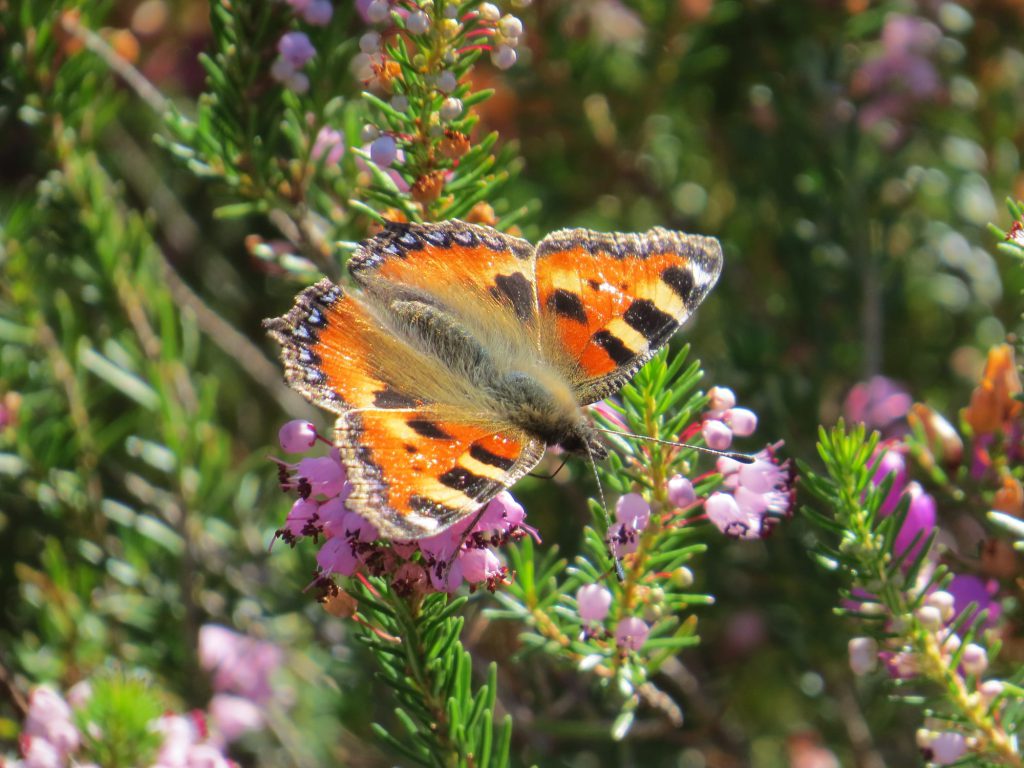The Lizard Peninsula is remarkable for its wealth of wildlife and the quality of its landscape. It is a designated Special Area of Conservation in recognition of its outstanding international importance. The expansive heathlands are perhaps the most obvious and most significant part of the mosaic. Open heathland is actually rarer than rainforest! In the UK, only about 16% of the heathland area that existed in 1800 now remains, but this remnant is still 20% of the whole of the world’s heathland. The Lizard’s lowland heaths are second only to those of the New Forest in terms of continuous area.
Heaths have different qualities throughout the year but are at their finest in August and September. This is when the pinks and purples of the different heather species contrast extravagantly with the yellows of Gorse and Bog Asphodel. The dominant heather species is often Cornish Heath (in those areas over serpentine geology), which has a large flowering spike with many pale pink or white flowers. The species is abundant here, encouraged by the special conditions that The Lizard offers, but is rarely found elsewhere.

There is much to reward the eye other than the heathers. You might come across a swathe of exquisite orchids or scabious, whilst habitats within the heathland, such as rocky outcrops and old trackways, are home to other less obvious but rewarding botanical delights. Stonechats and pipits abound, Dartford Warblers can be an occasional treat. Lizards dart out of the corner of your eye, whilst an Adder may give you cause to break your stride.

The decline in heaths has been rapid in some areas of the UK: urban development, conifer planting; changes in agriculture and mining have all nibbled away at the total. Heaths have often been misunderstood as wastelands, and therefore undervalued. They are, of course, of immense value for wildlife and public enjoyment, but nowadays their economic value is small and lack of management and neglect are a threat. Natural England, The National Trust, Cornwall Wildlife Trust and some private landowners have been managing heaths sympathetically for years. The key is maintaining a diversity of age structure – young, middle age and mature heath – offering the greatest range of habitats to different plants and animals. Controlled burning combined with follow-up grazing are prime tools in achieving this ideal heathland landscape.
So as you walk, cycle or ride through The Lizard’s heathland, spare a thought for its specialness, and for the work that goes into keeping it that way.
